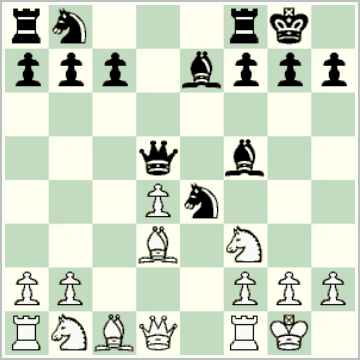The chess world is abuzz with news of the 10-move win of Leinier Domínguez Pérez against Elshan Moradiabadi in the US Championship in St. Louis earlier this month.
After 1. e4 e5 2. Nf3 Nf6 3. Nxe5 d6 4. Nf3 Nxe4 5. d4 d5 6. Bd3 Be7 7. O-O Bf5 8. c4 O-O? 9. cxd5 Qxd5??, the diagrammed position was reached.

Position after 9… Qxd5??
After 10. Bxe4!, Black resigned: the bishop at e7 is lost in all variations.
Much of the commentary described this as a well-known trap that has occurred before. Indeed it has, but what is the first example of it in a competitive game? As discussed here some time ago (see Irish Junior Championship 2016), the same position appeared in the game Coffey – McHugh, Irish Schoolboys’ Championship 1980. That game continued 10. Bxe4 Bxe4 11. Nc3 Bxf3 12. Nxd5 Bxd1 13. Nxe7+ and Kevin resigned. (Click to replay.)
The databases I checked have no examples of the diagrammed position before the turn of the millennium, and the game Matsuo – Al Badani, Japan v. Yemen, Istanbul Olympiad 2000, is the first with 10. Bxe4.
Does anyone know of an earlier example?
